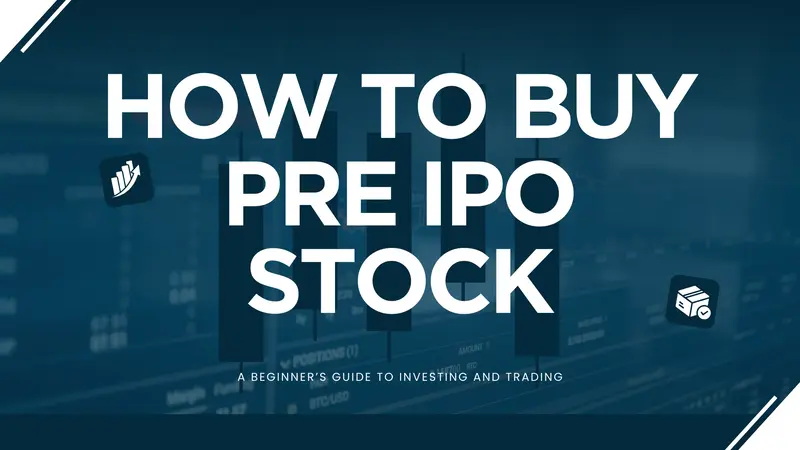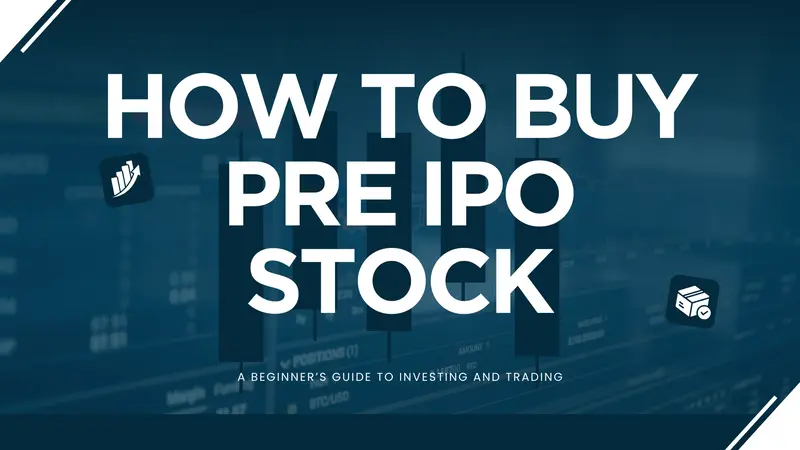Investing in the stock market is exciting, but one area that attracts a lot of attention is pre-IPO stock purchase. Imagine getting in early before a company officially goes public—this is exactly what buying pre-IPO shares means. If done wisely, it can offer high returns, but it also carries unique risks.
In this guide, we’ll break down what pre-IPO investing is, how it works, and the 8 proven steps to buy pre-IPO stock safely. Whether you’re curious about how to buy pre IPO stock or asking yourself, “How do I invest in private companies?”, this blog will help you understand the process.

Table of Contents
How to Buy Pre IPO Stock What Is Pre IPO Stock?
Before diving into the steps, let’s clear the basics.
Pre-IPO stock simply means the shares of a company that you can buy before it officially gets listed on a public exchange like NASDAQ or NSE.
- These shares are usually available to venture capitalists, private equity investors, employees, or accredited investors.
- Buying early means you may benefit if the company’s IPO launches at a higher valuation.
- However, since the company is still private, the risks are higher compared to buying already listed stocks.
Why Consider Buying Pre-IPO Shares?

- High Return Potential – If the company grows after going public, early investors can see significant profits.
- Access to Fast-Growing Startups – You get a chance to invest in companies before the general public.
- Portfolio Diversification—Pre-IPO stock purchases can add variety to your investment strategy.
But remember—along with opportunities, there are risks like lack of liquidity, limited information, and uncertain IPO timelines.
8 Proven Steps to Buy Pre-IPO Stock Safely
Here’s a step-by-step guide to help you navigate this investment option wisely.
1. Research the Company Thoroughly
Don’t just buy shares because of hype. Look into:
- Business model
- Financial health
- Market potential
- Leadership team
Good research reduces unnecessary risks.
2. Understand the Risks of Pre-IPO Investing
Unlike public stocks, private companies don’t disclose everything. Be prepared for:
- Limited liquidity (you can’t sell shares easily)
- Long waiting periods before IPO
- Possibility of company failure
3. Check Your Investor Eligibility
In many regions, only accredited investors (those who meet certain income or net-worth criteria) can buy pre-IPO shares directly. Even if you don’t meet the criteria, don’t stress—there are alternative options available for you
4. Use Pre-IPO Investment Platforms
Today, several platforms allow retail investors to buy pre-IPO shares, such as:
- EquityZen
- Forge Global
- SeedInvest
- AngelList
Through these platforms, you can directly connect with sellers who hold shares of private companies.
5. Explore Private Equity Funds or Venture Capital
If direct purchase isn’t possible, you can still invest through funds that hold pre-IPO shares of promising startups.
6. Look for Employee Stock Options (ESOPs)
Employees of private companies sometimes sell their stock options on secondary markets. This is another way to access pre-IPO stock purchase opportunities.
7. Verify Company’s IPO Plans
Not all private companies will go public soon. Check if the company has actually filed or announced plans for an IPO before investing.
8. Start Small and Diversify
Since risks are high, don’t put all your money into one pre-IPO investment. Start with a small portion of your portfolio and diversify across different opportunities.
Common Questions About Pre-IPO Investing

1. How do I invest in private companies?
ANSWER: You can invest directly if you’re an accredited investor or through platforms and funds that allow small investors access to pre-IPO shares.
2. Is buying pre-IPO stock legal and safe?
ANSWER: Yes, it’s legal—but safety depends on doing proper research, verifying platforms, and understanding the risks.
3. Can I sell pre-IPO shares anytime?
ANSWER: No. Liquidity is limited until the company goes public. Sometimes, you may need to hold shares for years.
4. What is the minimum investment?
ANSWER: It varies. Some platforms allow investments starting as low as $1,000, while direct investments may require much larger amounts.
5. What is the difference between IPO and pre-IPO?
ANSWER:
- IPO: Shares sold to the general public on a stock exchange.
- Pre-IPO: Shares sold privately before listing.
Final Thoughts
Buying pre-IPO stock can be a smart move for investors who want to get in early—but only if done carefully. By following the 8 proven steps, doing thorough research, and starting small, you can explore this opportunity while managing the risks.
So, if you’ve been wondering “How to buy pre IPO stock” or asking yourself “How do I invest in private companies?”, the key lies in choosing the right platform, understanding the risks, and staying patient until the IPO launch.
